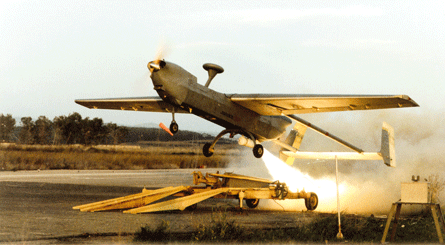Israel Aerospace Industries is establishing a presence in the US market for its signature defence product, unmanned air vehicles, through its Stark Aerospace subsidiary. But IAI's plans for the new company go beyond UAVs and their payloads.
Established in Starkville, Mississippi in 2006, Stark is IAI's first defence subsidiary in the USA. But the Israeli company has had a presence in the North American commercial aircraft maintenance, repair and overhaul market for several decades. Its Commodore Aviation subsidiary - part of IAI's Bedek MRO division - relocated from Miami, Florida to Rome, New York in 2005 and becoming Empire Aero Center.
IAI and its Elta electroncis division has sold products into the US defence market for years, but its Israeli rival Elbit Systems was first to establish a US subsidiary when in 1996 it purchased General Dynamics' electronics manufacturing business in Fort Worth, Texas. EFW is now a major supplier of defence electronics and today Elbit's US operations, which include cockpit avionics manufacturer Kollsman, account for around 40% of the company's revenues.
Created from scratch, Stark began operations upgrading RQ-5 Hunter UAVs for supply to the US Army through prime contractor Northrop Grumman, says Uzzi Rozzen, president of IAI International, the US arm of IAI that owns 100% of Stark. In 2007, the new company set up a second facility in Columbus. Mississippi to service IAI's Plug-in Optronic Payload (POP) for the US Army's AAI RQ-7 Shadow tactical UAV.

Stark is upgrading the Hunter UAVs with a larger "wet" wing to extend endurance and installing twin heavy-fuel engines based on a diesel first used in the Smart mini-car. This work will give the subsidiary the capability to manufacture UAVs for the US market.
Maintaining POP units in the USA shortens the turn-around time, says IAI. Stark has since added the capability to assemble the payloads, and will eventually have the ability to develop new versions of the POP for the US market. IAI has already developed smaller version of the electro-optical sensor for its I-View and Bird-Eye minim- and micro-UAVs.
Rozzen says Stark will have the infrastructure to expand its product portfolio to include not only new UAVs and electro-optical payloads, but aerostructures, including composites for commercial and military fixed- and rotary-wing aircraft - an extension of work IAI performs in Israel for airframe manufacturers. "In two or three years time there will be a unique Stark product," he says.
IAI is eyeing the US coast guard and border patrol markets for UAVs and payloads, and having a US-managed subsidiary will allow the company to bid directly for government contracts. "Stark will prime for IAI in the USA," says Rozzen. "We see opportunities for small and big UAVs."
The first opportunity seen for Stark is to produce a US version of IAI's equivalent to the General Atomics Aeronautical Systems Predator medium-altitude, long-endurance UAV, the Heron 1. The would be offered for coast guard and border patrol missions.
Stark has US management and will have a special security agreement allowing it to bid for US Department of Defence contracts. "It will be easier to penetrate the market with a US subsidiary," says Rozzen. "Stark will take IAI products and from them develop special products for the US market."
Source: Flight International























